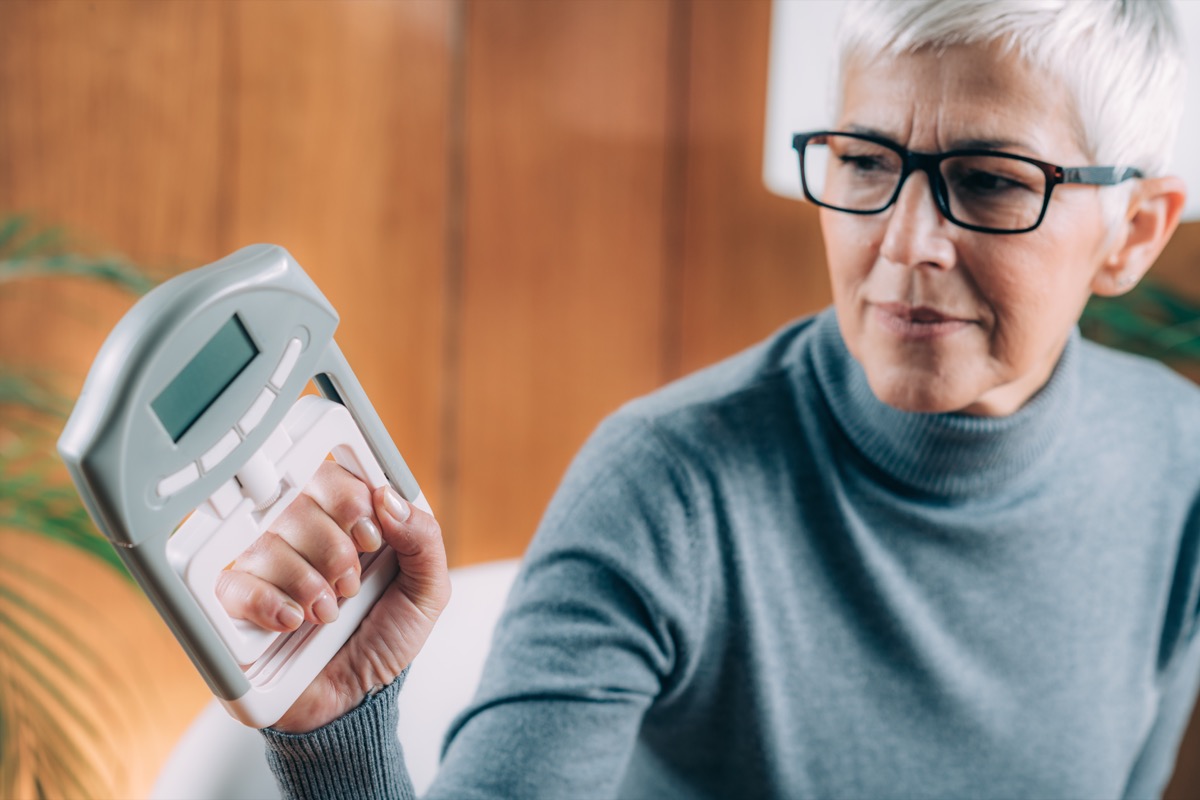A September study published by Annals of Medicine found that the strength of your handgrip could be used as a quick, inexpensive way for healthcare professionals to identify a patient’s risk of type 2 diabetes. Researchers at the Universities of Bristol and Eastern Finland examined the handgrip strength of 776 people between the ages of 60-72 who had no history of diabetes. For the study, the subjects were asked to squeeze the handles of a handgrip dynamometer with their dominant hand using maximum effort for five consecutive seconds. With the results of this experiment, researchers found that the risk of type 2 diabetes was cut in half for every unit increase in handgrip strength. While handgrip strength has consistently been associated with a lower risk of developing type 2 diabetes, researchers had not previously explored using this tool to help healthcare officials judge a patient’s likelihood of developing the disease. A June 2020 review of 10 studies found that people with higher values of handgrip strength had a 27 percent reduced risk of type 2 diabetes, which paved the way for the more recent study. Diminishing muscular strength, as measured by handgrip strength, can also be a sign of other ailments. As the study notes, reduced muscular strength has been linked to early death, cardiovascular disease, and other disabilities.ae0fcc31ae342fd3a1346ebb1f342fcb “These findings may have implications for the development of type 2 diabetes prevention strategies. Assessment of handgrip is simple, inexpensive, and does not require very skilled expertise and resources and could potentially be used in the early identification of individuals at high risk of future type 2 diabetes,” lead author Setor Kunutsor, MD, said in a statement. Using handgrip strength as a screener for a variety of disorders could become an effective way of assessing patients. Wondering what other factors could predict your risk of developing type 2 diabetes? Read on to find out. And for ways to lower your risk, check out these 17 Habits Proven to Prevent Diabetes. Smoking can cause a host of health issues, including type 2 diabetes. According to the CDC, smokers are 30 to 40 percent more likely to develop type 2 diabetes than nonsmokers. Additionally, for those who have already developed diabetes, smoking makes it more challenging to get the condition under control. And if you’re trying to cut cigarettes out of your life, discover The 10 Best Ways to Stop Smoking You’ve Never Tried. Being overweight or experiencing obesity increases your risk of developing type 2 diabetes significantly, according to the Obesity Action Coalition (OAC). If you already have diabetes, moderate, sustained weight loss can potentially improve your insulin action and lessen your need for diabetes medication. According to the World Health Organization (WHO), being overweight or obese accounts for about 65 to 80 percent of new diabetes cases. And for more useful content delivered straight to your inbox, sign up for our daily newsletter. A 2016 study published by PLoS One found that a low amount of physical activity or a more sedentary lifestyle is one of the most significant risk factors for several chronic diseases, including diabetes and cardiovascular disease. Physical inactivity is often linked to obesity, which increases a person’s number of risk factors. And if you’re looking to up your activity, here are 21 Easy Ways to Get in More Exercise Every Day. As you get older, your risk of developing type 2 diabetes increases. According to the CDC, people aged 45 to 64 receive the bulk of new diabetes diagnoses. Due to the increased risk, the American Diabetes Association (ADA) recommends that people begin getting yearly diabetes screenings once they reach the age of 45. And for more important information to keep you healthy, check out these 40 Things Every Woman Over 40 Should Know About Her Health.




